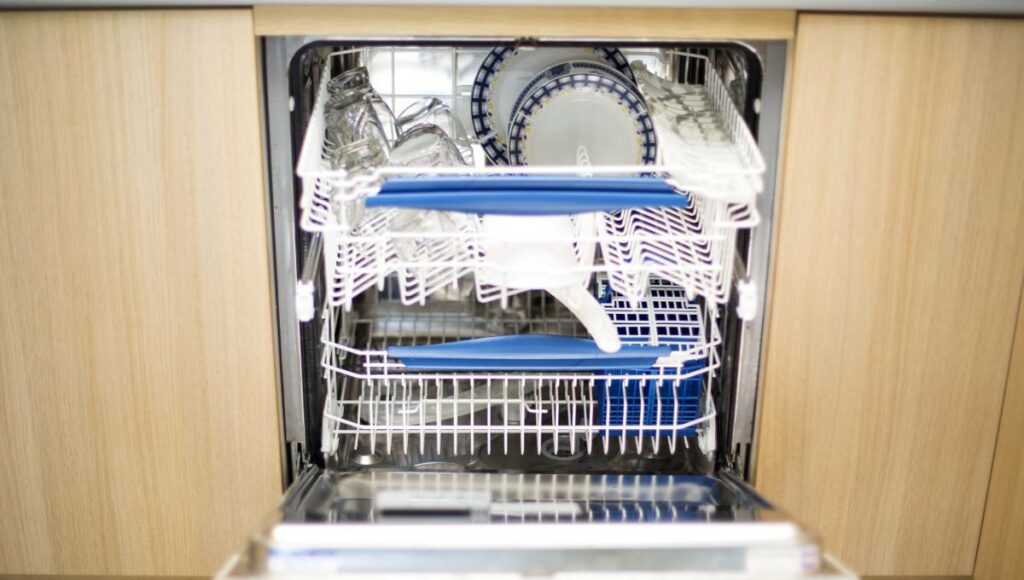Share the post "How To Tell If Dishwasher Circulation Pump Is Bad"
The dishwasher is essential for most people. So, it cannot be enjoyable when the dishwasher circulation pump develops a fault. However, knowing what is wrong is the first step toward fixing the defect. So it is good to learn to tell if the dishwasher circulation pump is bad.
Some signs of a faulty dishwasher circulation pump are noise while using the dishwasher, poor washing, or improper dishwashing. If you are experiencing these signs, your dishwasher circulation pump might be bad.
Before concluding, you should test to determine if the circulation pump is faulty. This article will explain what to look for and how to run the circulation pump test.

5 Signs To Know If Dishwasher Circulation Pump Is Bad
The work of the circulation pump in a dishwasher is to bring up water from the tub into the spray arms for dishwashing. This water enters different filters in the dishwasher and returns through the pump to resume a new washing cycle. Due to this working mechanism, a problem with the circulation pump will affect the washer’s efficiency.
However, before the pump fails, it will show you some signs. It would be best if you looked out for these signs before you run a test to confirm.
Lack Of Water
Due to the circulation pump’s water pumping role, a fault might stop the dishwasher during the washing cycle due to water not pumping adequately. This inadequacy of water in the dishwasher might indicate that you have a faulty circulation pump.
Lack Of Water Sprays
Suppose your dishwasher’s draining pumps and Wash motors are in good condition. But, the water sprays in the dishwasher are absent after filling up. Then there might be a fault in the circulation pump that needs repair or replacement.
Failure In The Wash Arms
A clog in the circulation pump can cause the wash arms not to spin. The clog in the circulation pump will reduce the spinning pressure of the wash arms and, in time, prevent it from working.
Noises While Washing
A fault in the circulation pump will cause noises during the washing cycle due to a lack of water in the washer. The noise is from the dishes clucking with the machine parts due to lack of water.
Poor Washing
With enough water, the dishes will wash properly. The circulation pump supplies water for washing. If your plates come out without being cleaned properly, you might have a circulation pump failure.
It would help if you cleaned the dished of debris and food remnants before putting them into the dishwasher to avoid clogging the pumps. Endeavor to unclog the pump from time to time as routine maintenance. Take your dishwasher to a repair shop if you need help unclogging it. You can also test the pump with a multimeter to confirm it is working.
How to Test Dishwasher Circulation Pump with Multimeter
Money is not easy to come by, so we can only afford to replace the circulation pump after confirming its failure. You can confirm by testing the pump using a multimeter. You will need the following tools:
Using these tools, follow the steps below to test the circulation pump:
- Unplug your dishwasher from its power source. With the screwdriver, remove the screws and the base plate.
- Disconnect all the connectors around the pump, including the anti-flood switch connector.
- Locate the pump motor and unhook the pump clamps with your pliers.
- Set the ohms setting on your multimeter and measure the pump’s terminal resistance by touching the terminal probes with the multimeter.
A reading of 100 ohms and above means that your circulation pump is working correctly. While below 100 ohms means the pump has a failure and needs replacement. It costs $200 to $600 for a circulation pump replacement. Depending on the dishwasher type or model, this cost can be higher or lower.
Conclusion
The dishwasher circulation pump is a vital part of the machine. It facilitates the flow of water into the washer for efficient operation. Therefore, a failure in this pump will mean a loss in the efficiency of your dishwasher. That is what you should know how to tell if the dishwasher circulation pump is bad.
This article has efficiently explained the signs you should look out for to tell if your dishwasher circulation pump is bad. So, if yours is not washing properly, you know what to do.

